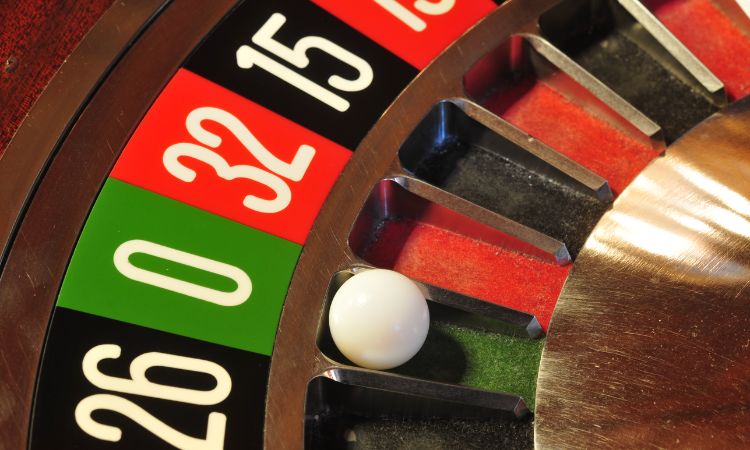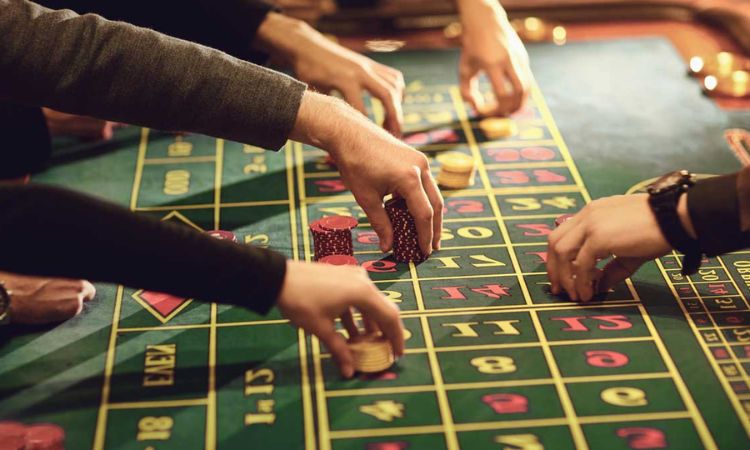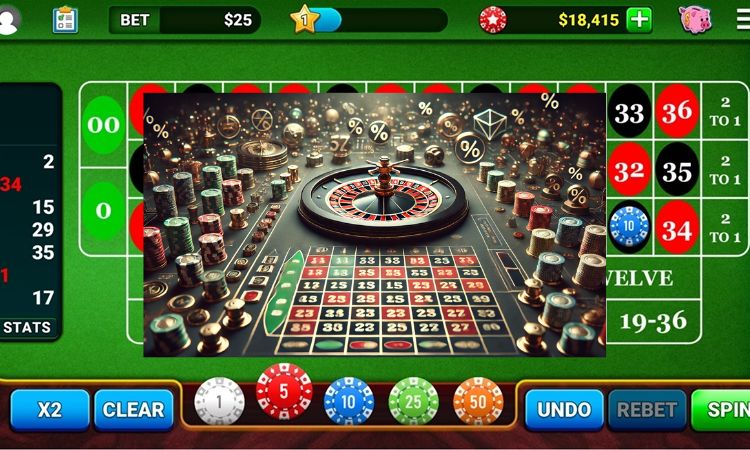Roulette is one of the most attractive and popular casino games in the world. With simple gameplay but full of luck, Roulette attracts players with its excitement, surprise and chance to win big. However, to optimize the chance of winning, understanding the payout ratio and probability in Roulette is essential. The article below by in 999 will help you grasp the details of these important factors to come up with a more effective playing strategy.
1. Overview of Roulette
Roulette, which means “little wheel” in French, is a game based on a spinning wheel numbered from 0 to 36 (European Roulette) or from 0 to 36 plus a 00 slot (American Roulette). Players bet on numbers, colors (red or black), or groups of numbers, and then a ball is dropped onto the spinning wheel. The outcome determines the winner based on where the ball lands.
There are two popular versions of Roulette:
European Roulette: Has 37 slots (0–36), with a higher chance of winning due to the presence of only one 0 slot.
American Roulette: Has 38 slots (0, 00–36), with a higher house edge due to the addition of a 00 slot.

2. Roulette Payout Ratios Explained
Depending on the type of bet you place, the payout ratio in Roulette can vary significantly. Understanding these payout levels is essential to determine your potential return and manage risk. The following table outlines the standard payout structure for European Roulette:
| Bet Type | Description | Payout Ratio |
| Straight Up | Bet on a single number | 35 to 1 |
| Split | Bet on two adjacent numbers | 17 to 1 |
| Street | Bet on a row of three numbers | 11 to 1 |
| Corner (Square) | Bet on a block of four numbers | 8 to 1 |
| Six Line | Bet on two adjacent rows (six numbers total) | 5 to 1 |
| Column | Bet on 12 numbers in one vertical column | 2 to 1 |
| Dozen | Bet on the first, second, or third dozen | 2 to 1 |
| Even/Odd | Bet on even or odd numbers | 1 to 1 |
| Red/Black | Bet on the color of the number | 1 to 1 |
| High/Low | Bet on numbers 1–18 (Low) or 19–36 (High) | 1 to 1 |

3. Probability of Winning in Roulette
Understanding the probability of winning in each type of bet is key to forming a sound betting strategy. Below is a breakdown of the winning odds for common bets in European Roulette (which includes numbers 0–36, totaling 37 pockets):
| Bet Type | Probability of Winning | House Edge |
| Straight Up (1 number) | 1/37 ≈ 2.70% | 2.70% |
| Split (2 numbers) | 2/37 ≈ 5.41% | 2.70% |
| Street (3 numbers) | 3/37 ≈ 8.11% | 2.70% |
| Corner (4 numbers) | 4/37 ≈ 10.81% | 2.70% |
| Six Line (6 numbers) | 6/37 ≈ 16.22% | 2.70% |
| Dozen/Column (12 numbers) | 12/37 ≈ 32.43% | 2.70% |
| Even/Odd, Red/Black | 18/37 ≈ 48.65% | 2.70% |
In contrast, American Roulette includes an extra 00 pocket, increasing the total to 38 numbers and reducing the player’s odds slightly. This gives American Roulette a house edge of 5.26%, compared to 2.70% in European Roulette.
4. Payout and Probability Analysis: What to Look for?
While the payouts are quite attractive, players should note that bets with high payouts have low winning probabilities. For example:
Straight Up: If you win, you will be paid 35 times your bet. However, the probability is only about 2.7%.
Red/Black Bet: Winning rate is nearly 50%, but only paid double.
So which bet should you choose?
If you want to be safe, choose red/black, even/odd or high/low – the chance of winning is nearly 50%.
If you like to take risks and have big rewards, straight or corner bets may be more attractive, but come with higher risks.

5. Strategies for using odds and probabilities
Although Roulette is a game of chance, you can still apply some strategies to manage your capital and optimize your profits, such as:
Martingale strategy: Double your bet after each loss to recover your capital and make a profit after a win. Effective with 1:1 bets but requires a large capital.
Fibonacci strategy: Use the Fibonacci sequence to determine your next bet. Safer than Martingale but still relies on a winning probability of more than 50%.
Labouchere strategy: Divide your profit target into a series of numbers, adjust your bets according to the total at the beginning and end of the series. More complex but flexible.
Whichever strategy you use, it is important that you understand the nature of probability and payout ratios, and choose a strategy that suits your budget and playing style.
Understanding the payout ratio and probability in Roulette not only helps you understand the game better, but also forms the basis for building a smart playing strategy, avoiding betting based on emotions. Whether you are a newbie or experienced, a clear understanding of numbers and probability is always an important advantage in the journey to conquer the Roulette wheel.
See more:

